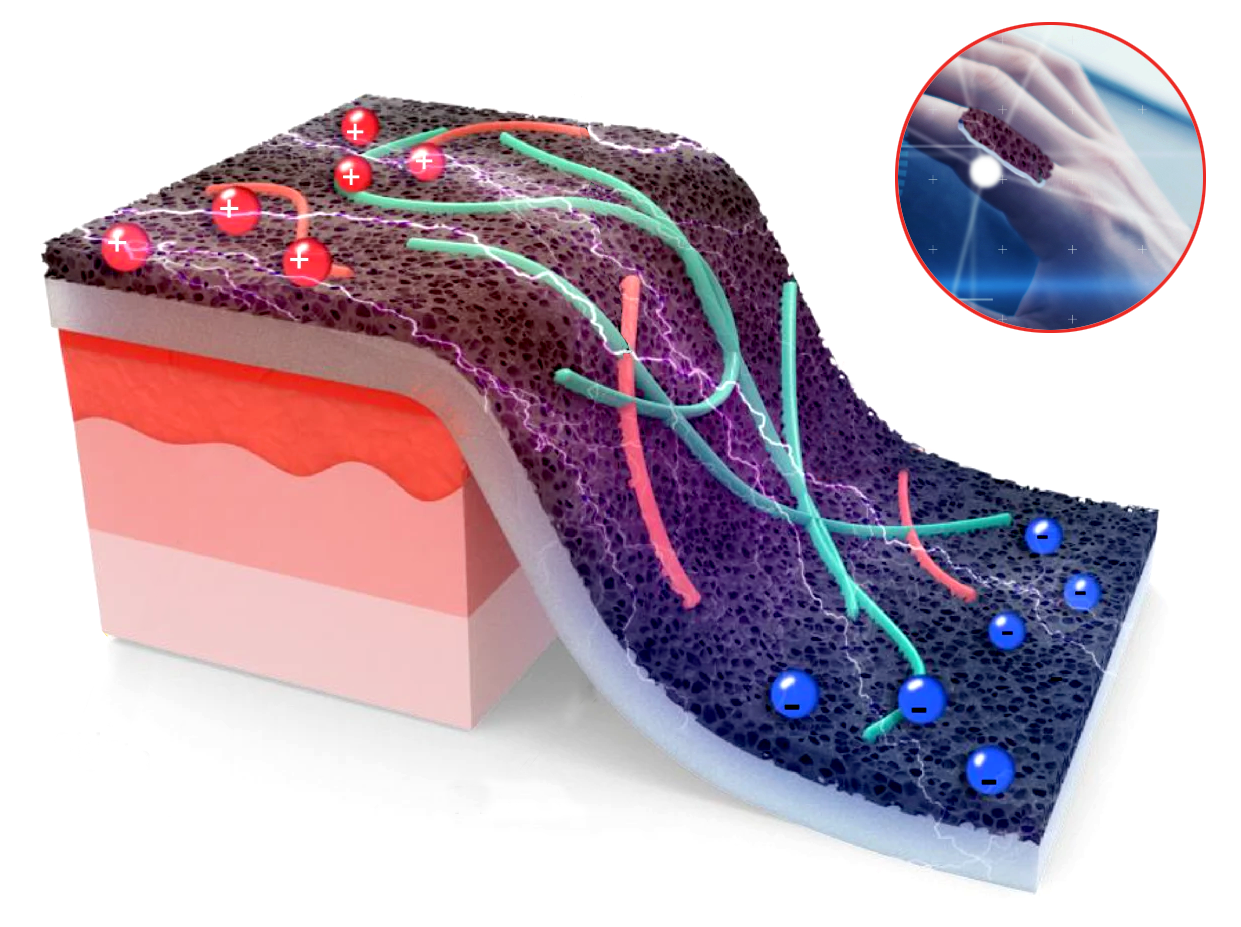Researchers at Penn State and Hebei University of Technology have made a breakthrough in the field of wearable sensors for healthcare monitoring, particularly when it comes to distinguishing multiple signals occurring simultaneously. Their work focuses on a new sensor material that enables precise and separate measurement of temperature and physical strain, a crucial development for accurately tracking various health signals.
 The flexible sensor, ideal for use in the human body, uses laser-induced graphene to simultaneously but separately measure temperature and strain, potentially enabling better wound healing monitoring by providing clearer insights into inflammation and recovery. Image Credit: Jennifer M. McCann
The flexible sensor, ideal for use in the human body, uses laser-induced graphene to simultaneously but separately measure temperature and strain, potentially enabling better wound healing monitoring by providing clearer insights into inflammation and recovery. Image Credit: Jennifer M. McCann
This unique sensor material we've developed has potentially important applications in health care monitoring. By accurately measuring both temperature changes and physical deformation or strain created by a healing wound and measure that by separating the two signals, it could revolutionize the tracking of wound healing. Doctors could get a much clearer picture of the healing process, identifying issues like inflammation early on.
Huanyu “Larry” Cheng, Study Co-Corresponding Author and James L. Henderson, Jr. Memorial Associate Professor, Engineering Science and Mechanics, Pennsylvania State University
The team’s innovation centers around laser-induced graphene (LIG), a two-dimensional material with properties that have been explored in the past but never in this specific context. LIG is created by using a laser to convert carbon-rich materials, such as plastic or wood, into graphene by heating their surfaces. This simple and scalable process is already used in a variety of applications, including gas sensors and electrochemical detectors. However, the research team believes they have uncovered a new, critical property of LIG that makes it ideal for multi-signal sensing.
Cheng added, “In this particular study, we kind of stumbled upon the fact that this material also has thermoelectric properties. We believe this is the first time anyone has reported laser-induced graphene having thermoelectric capabilities. And that's really important for what we're trying to do here, which is to separately measure both temperature changes and physical strain or deformation.”
Thermoelectric properties allow a material to convert temperature differences into electrical voltage, which is essential for both temperature sensing and energy harvesting. By exploiting this property, the team was able to distinguish between temperature changes and physical strain in their sensor.
“When you have materials that are sensitive to both temperature and strain, it can be tricky to tell which signal is causing changes in the material. But by using this thermoelectric effect in the laser-induced graphene, we can essentially decouple those two measurements. We can look at the electrical resistance to get information about the strain, while also measuring the thermal voltage to determine the temperature. This is why doctors could use it to track both temperature fluctuations and physical changes in the wound site and give a much clearer picture of how the healing is progressing,” Cheng added.
He also highlighted that the sensor is highly sensitive, capable of detecting temperature variations as minor as 0.5 ºC. The design of the material leverages the interaction between porous graphene and thermoelectric components, enhancing its efficiency in converting heat into electricity by nearly four times. Additionally, the sensor can stretch up to 45 % and adapt to various shapes and surfaces without compromising functionality.
Cheng further added, “The porous structure of this material creates a lot of tiny spaces and channels that allow it to interact with its surroundings in a very sensitive way. This makes it well-suited for interfacing with human soft tissues, in contrast to more rigid thermoelectric materials, such as ceramic-based ones.”
Since the thermoelectric aspect of LIG also means it can generate electrical power when there is a temperature difference, LIG sensors are self-powered. According to Cheng, this could be particularly useful for continuous monitoring in clinical settings and for other applications, such as helping detecting fires in remote locations.
In addition to enhancing the sensor, the research team is working on a wireless system that will enable remote monitoring of sensor data. This advancement will facilitate real-time tracking of critical information, such as temperature or strain, via smartphones or other devices.
“For example, a doctor could monitor a patient’s condition from a distance, or emergency responders could receive alerts about dangerous temperature changes. These advancements aim to make the technology more accessible and effective, helping to improve health monitoring and safety in everyday situations,” Cheng added.
Journal Reference:
Yang, L. et. al. (2025) Thermoelectric porous laser-induced graphene-based strain-temperature decoupling and self-powered sensing. Nature Communications. doi.org/10.1038/s41467-024-55790-x